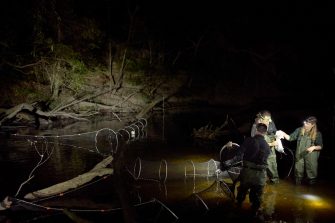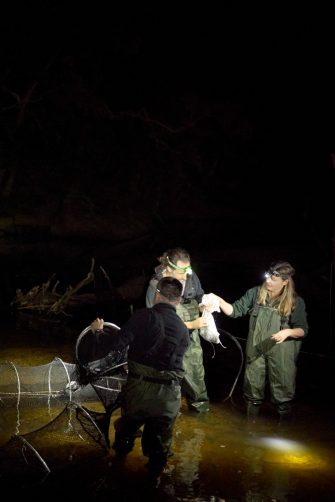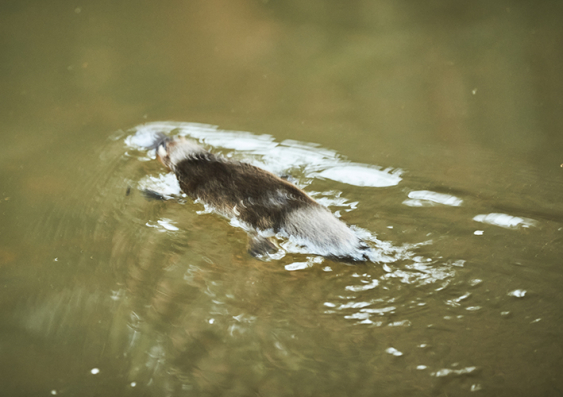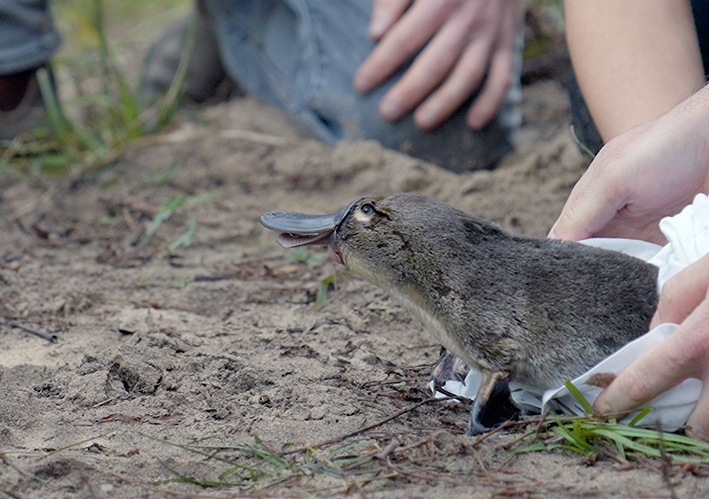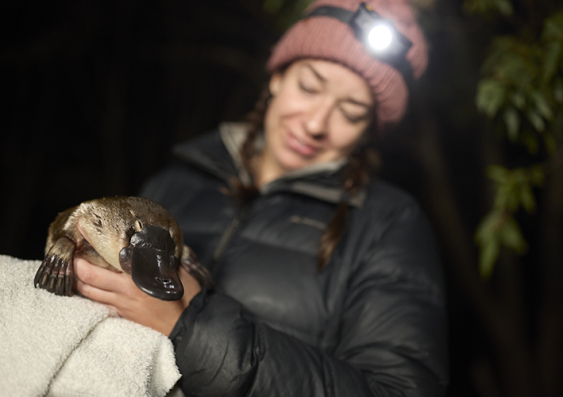The first platypus translocation in NSW has resulted in breeding success with the discovery of a juvenile platypus in the Royal National Park.
Scientists and researchers have discovered a six-month old juvenile platypus in the Royal National Park, less than a year after 10 platypuses were returned there after being locally extinct for more than 50 years.
The landmark event marks the first successful breeding of the species since the initial translocation in NSW, aiming to re-establish a self-sustaining and genetically diverse platypus population within the park.
Led by scientists from UNSW Sydney, the Platypus Conservation Partnership represents a pioneering collaboration between the Platypus Conservation Initiative (UNSW), WWF-Australia, NSW National Parks Wildlife Service and Taronga Conservation Society Australia.
The platypus is in excellent condition, weighing 850g and is estimated to be about six months old. Her age aligns with the conclusion of the platypus breeding season and means she would have only just emerged from her burrow.
After consulting with the local Indigenous community, the platypus has been named 'Gilli', meaning flame in the Dharawal language.
“Finding the juvenile platypus is a clear sign that the reintroduced population is not just surviving but thriving, adapting well to their new environment, and contributing to the genetic diversity and resilience of the species,” said Dr Gilad Bino, lead researcher on the project from UNSW’s Centre for Ecosystem Science.
Dr Tahneal Hawke, a fellow platypus researcher at the Centre for Ecosystem Science at UNSW, highlighted the significance of the finding: “The excellent condition and age of the juvenile platypus show the environment's suitability. It's a significant step forward in our conservation efforts and a moment of hope for the future of platypuses in the Royal National Park.”
The NSW Minister for the Environment, Penny Sharpe, was present when one of the reintroduced females was caught on Saturday night. She hailed the news as a wonderful discovery for the dedicated scientists and researchers who spent their nights patiently observing the Hacking River.
“Not only are they surviving, but the discovery of a juvenile platypus shows they are thriving, which means the Royal National Park is in great shape,” she said.
"Invasive species are being dealt with and water quality is good.
“This gives me great hope that our collaborations are working; that we can protect what’s left and restore what has been damaged. Thank you and congratulations to UNSW Sydney, Taronga Conservation Society Australia, WWF-Australia and NSW National Parks and Wildlife.”
Genetic testing
The project has employed accurate tracking to monitor the reintroduced population, a strategy that will continue to shed light on their establishment.
“As the project moves forward, we remain dedicated to monitoring the platypus population, ensuring the continued success and expansion of this pioneering reintroduction effort,” Dr Hawke said.
Genetic analysis will enable the team to identify the juvenile's parents, providing valuable insights into the breeding patterns and genetic health of the population. This information is essential for the continued success and management of the platypus within the park and for future conservation strategies.
Reflecting on the project's wider impact, Professor Richard Kingsford, Director of the Centre for Ecosystem Science and part of the platypus research team, said the project was a good-news story in river conservation.
“The project’s progress and the recent breeding success are a fantastic lightning rod for conservation of rivers,” he said.
“We want to feel good about the environment. And this is such a good way to show it. Platypus could be such a good indicator of the health of our rivers.”
Dr Phoebe Meagher, from Taronga Conservation Society, has worked on the project since its inception and was involved in checking on the health of the platypuses as they were transported from the Snowy River region to their new home in the Royal National Park.
“Being able to refine and learn from conservation translocations so we can step in and assist vulnerable populations in times of need is absolutely critical,” she said.
“To have such success in the first-ever translocation of platypus in NSW fills me with hope for the future of this species.”
WWF-Australia Rewilding Program Manager Rob Brewster said the joint project also demonstrated the benefit of community involvement in the protection of threatened species.
“Proof of successful breeding is about much more than the happy news of discovering a healthy juvenile platypus,” he said.
“This whole project embodies what ‘rewilding’ is: the community coming together and saying that we don’t accept species and ecosystem decline. That we can return those vital missing elements that make our world so interesting to us all.”


